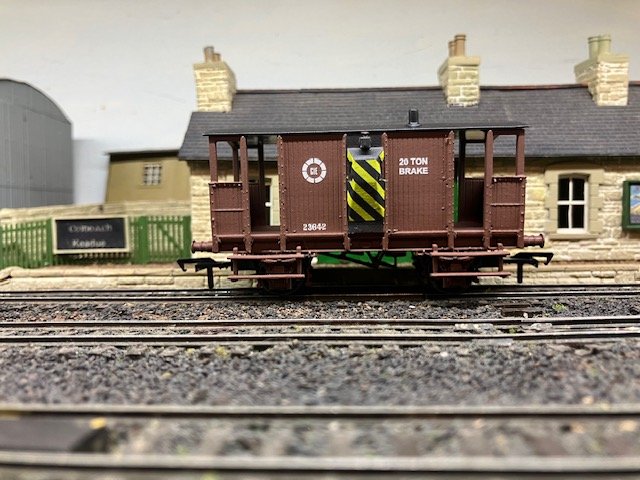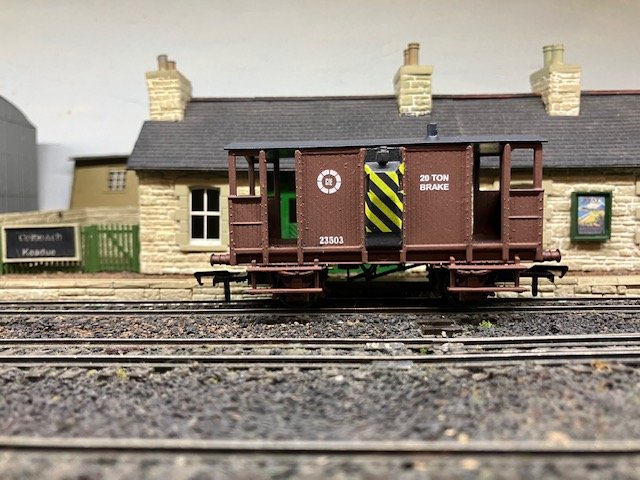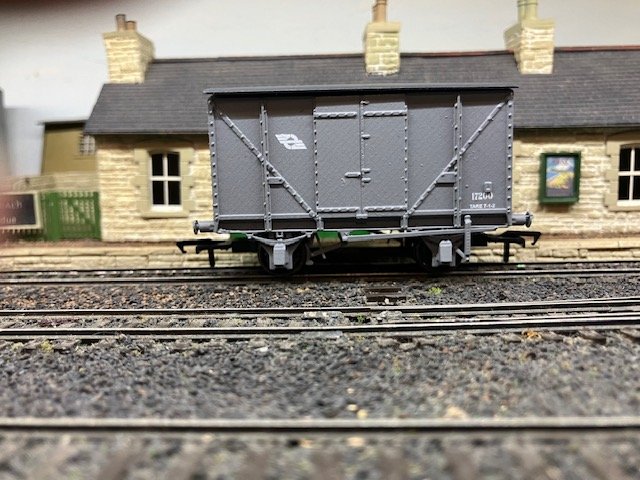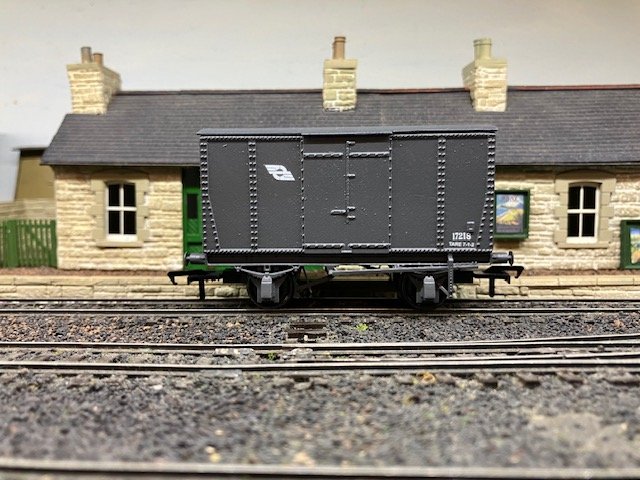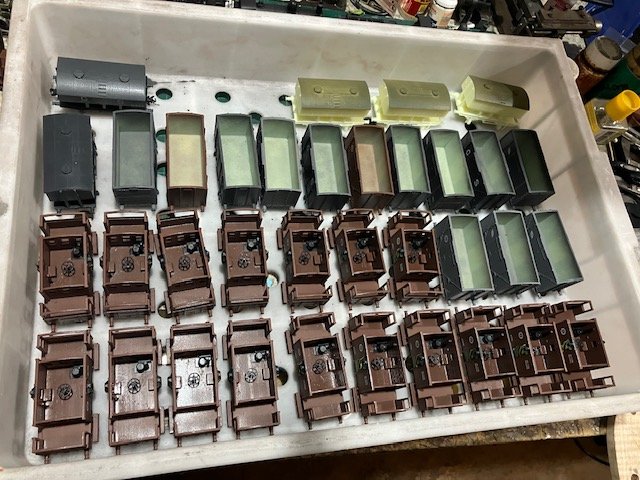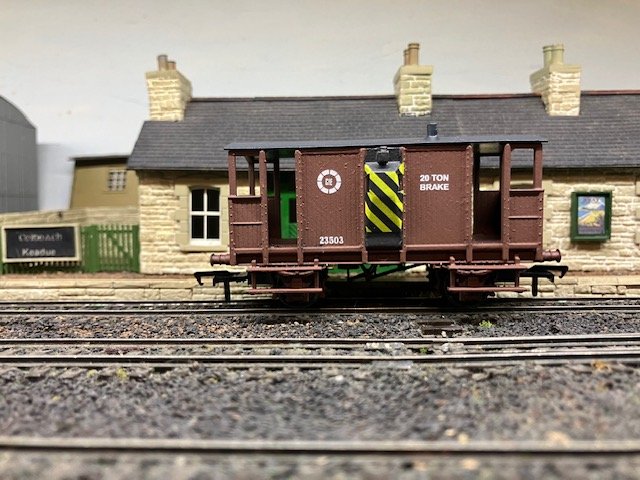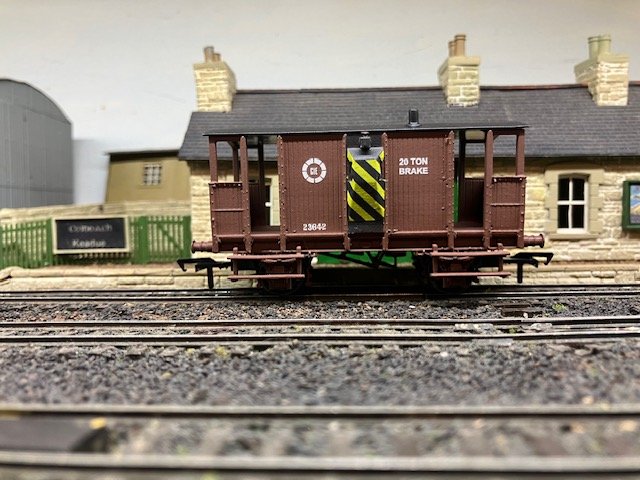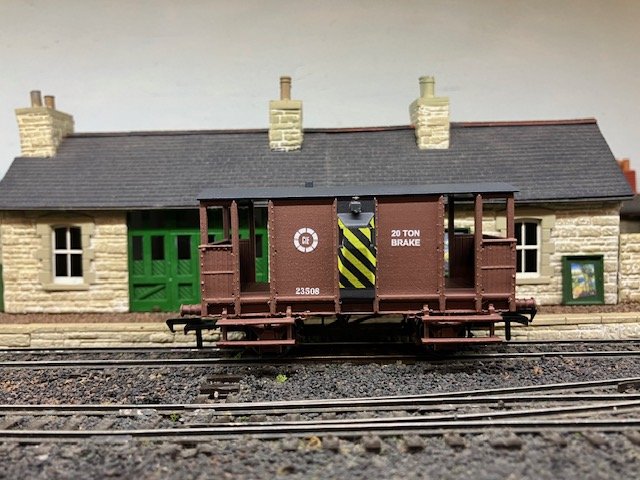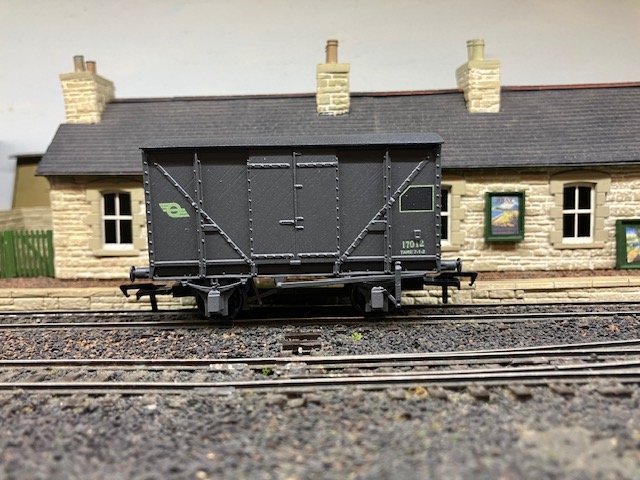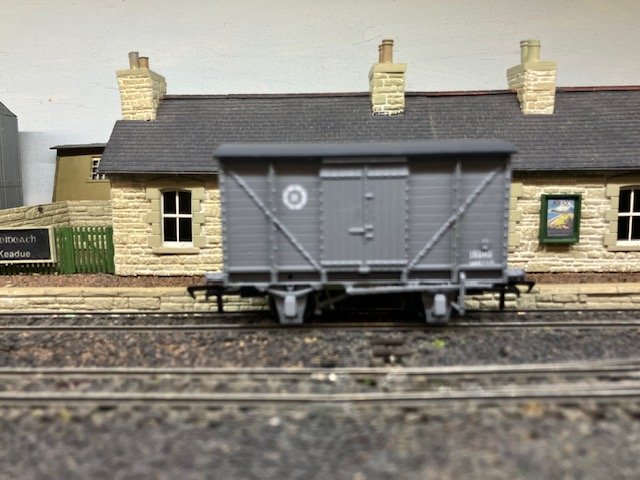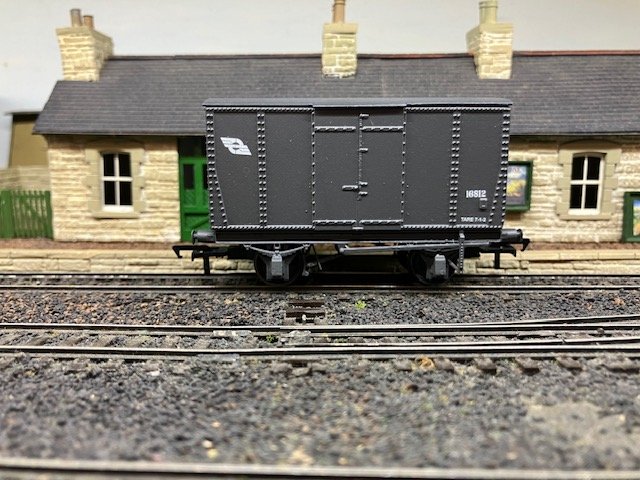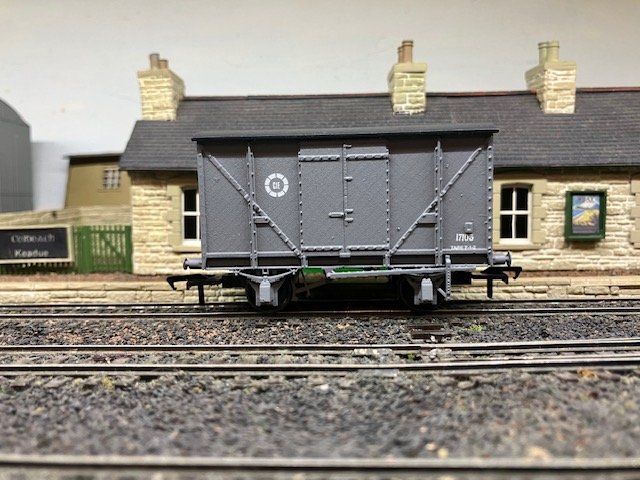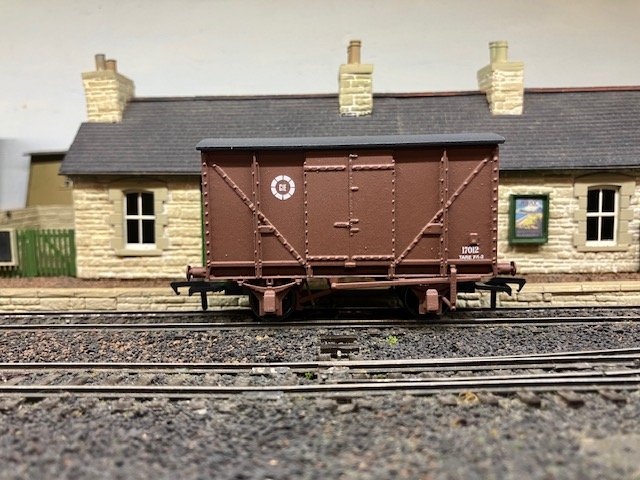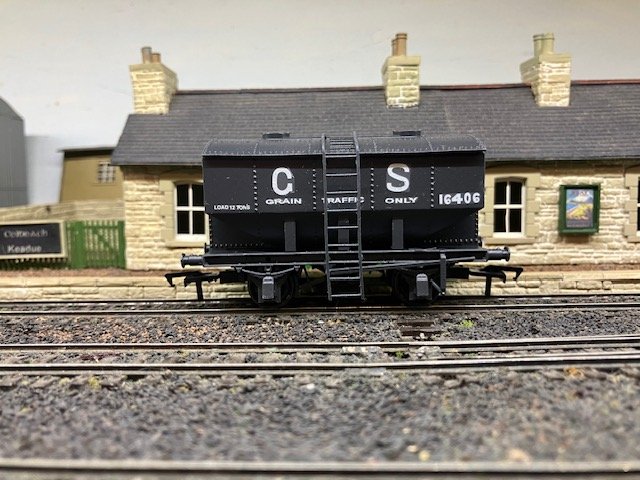-
Posts
4,861 -
Joined
-
Last visited
-
Days Won
119
Content Type
Profiles
Forums
Events
Gallery
Blogs
Store
Community Map
Everything posted by Mayner
-
I think the video of the B141 and C Class may have been on a late running Waterford-Mallow goods with the C Class later returning on a Dungarvan-Waterford goods while the B141 continued to Mallow. During the final years of operation goods traffic over the Waterford-Mallow line goods traffic was heaviest between Waterford and Dungarvan and Fermoy and Mallow. B121 and B141s appear to have been the regular motive power for the once daily goods which worked over entire length of the line the Waterford and Mallow bound trains appear to have crossed at Cappaquin. Dungarvan was also served by an out and back Trip Working or 'Turn' from Waterford possibly worked by a C Class. Its possible the C may have been double heading with the B141 on a Waterford-Mallow goods as there may have been insufficient traffic to justify running a separate Waterford-Dungarvan trip or it may have been more convenient to doublehead the train. It would have been necessary to 'double head' with a driver in both locos or haul the second loco dead as a B141 & C201 were incapable of working in multiple until C233&234 were rebuilt with Maybach engines and re-classified and re-classified as B Class in the mid-1960s. For most of the 1960s the B121 Class were incapable of working a train in multiple with another loco.
-
Trains running on tracks suspended from the ceiling used to be fairly common in Bars & Restaurants in the States 20 or so years ago, though I never actually saw one running. Train and tracks were usually LGB a quality German brand of 'large scale' model train often used on garden railways. Trackbase may have been a proprietary system suspended from the ceiling by threaded rod. Don't know if anyone in Ireland stocks or distributes LGB or a suitable track base system. Probably best to contact Garden Railway Specialists in Princes Risborough for advice, there is a 'Bunnings Workshop' (Australia) on suspend a model train from a ceiling https://www.workshop.bunnings.com.au/t5/Living-and-Bedroom/How-to-suspend-model-train-from-ceiling/td-p/128218 LGB/Large Scale is probably the best option in terms of size and durability, though keeping the tracks clean enough for the train to run reliably may be the biggest challenge in a restaurant environment. LGB may have a Christmas themed train set https://www.maerklinshop.de/en/detail/index/sArticle/7/number/L70308?__country=28 other brands are best avoided as they don't have the same level of durability. 'Baseboard Dave on this forum https://irishrailwaymodeller.com/topic/15421-new-flat-pack-baseboards/#comment-223643 may have the necessary skill and experience to manufacture a suitable track base. In you have the space Large circle of LGB track (approx 5' radius) round the Christmas tree also popular in the States would be a less expensive reliable low risk option.
-
Final-Final RTR 3D printed wagon orders. We have 3 Brake Vans & 4 Van availabe having dispatched our pre-order stock. Vans are of the planked variety similar to the preserved Cultra Van. 1946 & LMA varieties of Covered Van with Flying Snail logo. I considered a number of options for continued production including producing the 20T Brake as a RTR model in colloboration with a UK retailer (who had successfully produced a 3D printed RTR wagon) and producing the wagons in kit form in Ireland or the UK. Unfortunately it was not practicable to manufacture (3D Print) the Brake in the UK at a realistic price point, the wagon would have had to retail at over £100 to cover UK production costs. I trailed 3D printing with an Irish manufacturing partner unfortunately they were unable to produce prints to a similar standard of quality to my current Far East supplier. I am happy to supply 3D prints to special order direct to the customer from our Chinese factory subject to a minimal order quantity of 10 wagons (mixture of any type), prints supplied without wheels, couplings, weights or decals. Please PM on this board or info@jmdesignmr.co.nz if interested and I will prepare a quote. I will continue to supply our etched kits and overlays to order from PPD on a similar basis.
-
It usually takes two weeks to ship an item by International Air to a customer in Ireland or the UK, although orders to customers in England and Scotland are sometimes shipped in one week. (havent had any customers in Wales so far) Interestingly although Markleman's and Patricks orders apparrently departed New Zealand at the same time, Marklemans order appears to have been shiped directly to the UK while Patrick's appears to have been shipped via North America arriving in the UK a day later (than Marklemans order). Tracking info indicates that Patricks and recently fulfilled orders to customers in Ireland and the UK may have been shipped via North America rather than via Asia and the Middle East.
-

Andrew Barclay Tanks Complete And Due In Stock Very Shortly!
Mayner replied to Warbonnet's topic in British Outline Modelling
Fran Quite tempted, any information on the mechanical spec. -

Ernies Massive Irish 1930's to 2005 Photo Archive
Mayner replied to Glenderg's topic in Photos & Videos of the Prototype
Posted Thursday at 22:56 (edited) Whilst I have no idea what area on the body that might be a euphemism for, I do hope you recover quickly. Edited Thursday at 23:09 by Broithe Think Ernie may have been referring to a famous photo location on the Festiniog rather than some part of his anatomy http://217.34.233.120:8086/view-item?i=49&WINID=1729316834959 Hopefully Ernie is recovering and will soon post more photos of his adventures on the Festiniog and Welsh Highland Quite an experience travelling on the Festiniog especially by Observation Car a main line in miniature quite unlike the usual bucolic narrow gauge experience. Cannot comment on the current situation but at one stage through ticketing was available from the BR system onto the Festiniog with 1st Class travel on the narrow gauge. On one occasion I booked through from Port to Holyhead and another from Liverpool to Port and return. -
I have fulfilled and shipped all pre-and current orders. A small number of pre-Bulleid era CIE Covered Wagons are available on the website as a result of a cancellation. https://jmdesignmodelrailways.com/ We are now able to accept on-line orders from Ireland, the Uk and the USA our main markets. Unfortnately Shopify consider Ireland (the Republic) to be a separate market to the rest of the Eurozone. Our current Shopify Plan limits our sales to 3 "Markets" and its just not worth while upgrading to a more expensive plan.
-
Apparently the tramway gauge was set narrower than 3ft to allow the flanges of railway wagons to run in the groove of the tramway track. https://en.wikipedia.org/wiki/Cork_Electric_Tramways_and_Lighting_Company
-

Re-opening of Taiere Gorge Railway 23 OCT 24
Mayner replied to Mayner's topic in Photos & Videos of the Prototype
-
One of the Worlds more spectacular train ride, comparable with the Durango & Silverton in Colorado or the While Pass line in the Yukon. The railway operates on a 37 mile section of the Otago Central line bought by the City of Dunedin as a base for Tourist Train operations following closure during the late 80s. Operation was disrupted in 2020 as a result of the impact of the Covid pandemic on the tourist industry and uncertainty over funding. Diesel locos are a Japanese built tripple bogie light axleload design built for South Island service largely replaced in mainline service during the late 80s by standard GE export designs.
-

Limerick to Foynes railway reopening plan
Mayner replied to spudfan's topic in What's happening on the network?
Spent some time exploring the railways and time with friends in the county when I lived in the "Home Counties" during my misspent 30s. Rural and quite sparsely populated away from the industrial centers on the Nene Valley and its tributaries the county once had an extensive railway system mainly as a result of competition between the Great Western, LNWR, Midland and Great Central for traffic between London and the Midland cities. Apart from the Great Central "London Extension" which ran through an entirely rural part of the County and closed under the Beeching Axe of the 60s the remaining trunk routes that run through the county WCML & Northampton Loop Line, Midland Main Line and Chiltern London-Birmingham route and probably busier than ever and passenger services restored to the Kettering-Corby branch closed in 1966. While 4 of the stations serve large centers (Cities by Irish standards) Northampton (243k) Wellingborough (54K) Kettering (57k) Corby (62K) the remaining two stations serve small towns/villages by comparison and are seved by slow/stopping services only Long Buckby ,4K Northampton Loop Line, Kings Sutton 2.3K. Interestingly a workmate from Daventry 27K (one of largest towns in England without a rail station) used to commute by train from Northampton to Watford rather than from Long Buckby (nearest station) as he could use a quicker non-stop service despite a longer drive. Northamptonshire lost most of its traditional industries (iron and steel and shoe manufacture) by the 1980s passenger traffic is mainly London commuting, while the Daventry International Freight Terminal became one of the first of the current generation of independently owned/operated "Inland Ports" https://en.wikipedia.org/wiki/Daventry_International_Rail_Freight_Terminal -

Mark 1 Suburban Coaches Formations guide
Mayner replied to Warbonnet's topic in British Outline Modelling
Famously Class 31 hauled London suburban and outer services out of Kings Cross and Moorgate to destinations in Herts and Cambridge from the 60s until the services was electrified from the mid 70s onwards. Slam Door Compartment and High Density stock seemed to be popular with both passengers and operating staff for London (and Biirmingham) suburban/outer suburban services until replaced with MK3 stock although Mersey Side and the North East had graduated to "modern" sliding door saloon electric stock from the 1920s onwards. Routes, motive power and train formations detailed in Warbonnet's original post. -
A small number of RTR Brakes and covered wagons are now available on the website https://jmdesignmodelrailways.com/. The website is no longer capable of accepting on-line orders from customers outside of Ireland and the UK as a result of changes to the conditions of the businesses Shopify Plan. Customers outside outside of Ireland or the UK interested in placing an order can contact me by e-mail info@jmdesignmr.co.nz.
-
Guinness Group (Harp Larger) was one of the main users (promoters?) of the Executive Train regularly used to transport drinks industry VIPs and staff to visit the Harp Larger brewry in Dundalk. At the time a cousin was a bar manager in Dublin and a trip to Dundalk on the Executive Train along possibly with golf outings was considered on e of the perks of the job. The Executive Train was on display on the Saturday of the Inchacore 150 event before leaving on an afternoon charter.
-
Probaby a hang over from the old clann system more than a few places in Ireland where the locals consider it no business of Merrion St or Westminister what goes on in the area controlled by their 'people". I ran into that culture when I visited Kenmare 'on Official Business" while working for an Inspector with the Health and Safety Authority investigating a complaint about safety on a construction site. Asking at the Post Office for directions to a townland the postmaster asked "Ar-u-from Tralee?" he looked positively shocked when I told him I had been sent from Dublin "it must be something very serious". I hadn't the heart to tell him I was just 'flying the colours" investigating construction complaints in the Kingdom and hadn't been sent specially to his Town. Donal Foley in his Irish Times 'Man bites Dog' column of the 1970s described Crossmaglen as a self governing Canton, I worked in Dublin in the early 2000s for as a Site Foreman for a construction company from the Cross the workers from South Armagh only showed respect for one man (ignoring all the layers of management) the company founder and managing director whom they basically considered the chief. Interestingly I had a similar experience in a similar role after I moved to New Zealand in 2004 in this case some long serving Maaori line managers only who showed respect for the Pakeha (European) company founder and director.
-
I am currently completing our last run of RTR wagons and expect to begin fulfilling orders in mid-October. Once I fulfill existing orders a small number of wagons will be available for sale on the website. https://jmdesignmodelrailways.com/ Decorated wagons awaiting final assembly. Our most popular model 23508 rebuilt version of van with steel duckets, ply bodies cabin and planked balconies a real hybrid! GSWR Covered Wagon introduced 1915 a few lasted in revenue service into the eraly 70s, formed the basis of the CIE 'H Vans" (Hard Topped) CIE "1946" verison of Covered Wagon in as introduced condition dark grey with green snail and numerals. These were CIEs 1st version of the H Van featuring aluminium sheeting on a timber planked body on a 10' wb version of the 'Standard Irish" wagon underframe. LMA wagon. CIE built a handful (11) of these "Light Metal Alloy" wagons in the late 40s-early 50s. 16812 is the last in the number series of 15147-16812 series vans built by the GSWR-GSR-CIE from 1915 onwards. Light grey and brown versions of the "1946" vans, some vans remained in gery with snail logo until scrapping in the early 1980s. A few for myself GSR Bulk Grain wagon unfortunately difficult to disguise the decal film. A pair of vans with GS markings, I need to produce some sets of GSR wagon numbers and wagon markings.
-

Rapido Launch "Evolution" Range of 48 Foot Generic Bogie Coaches
Mayner replied to DJ Dangerous's topic in News
A modeller could always follow the Tim Cramer's example of converting a Triang-Hornby/Hornby Clerestory coach into a 45' GSWR arc roofed coach by fitting a plasticard arc roof, fitting new (flat ends) and interior partitions. One currently listed on e-bay at £7.00 bit easier on the pocket than carving up an Evolution coach at almost £70.00. Tims ex-GSWR coach was was featured in a Railway Modeller "Irish Miscellanery" artice possible May 1972 along with 4mm 21mm gauge scratch built models of No 90, a Bandon Tank and a J26. Tim's coach was basically a scratchbuilt plasticard model with Triang Clerestory sides, a lsee extensive re-build could be achieved by replacing the clerestory roof with a plasticard arc roof and fitting the distinctive roof vents/lamps supplied with SSM GSWR 6w coach kits. -
Station remained open for goods (Polloxfens mills) and as a crossing place until mid -70s after closing for passenger traffic 63/64. Buildings were reasonably intact when I checked out the station about 40 years ago interestingly remains (chassis) of derlict road vehicles possibly school buses in the yard. CIE may have used the station as a base for railhead delivery and school bus services after passenger traffic ceased.
-
In this part of the World Government has instructed Transit New Zealand our equivalent of the NTA to focus on roads and motorways away from (public transport/cycleways/greenways which were favoured by the last centre left government) so not a lot different to the NTA. The sting in the tail is that its planned to introduce a 'User Pays" system to charge road users which is likely to be more expensive than current fuel exise and road taxes. The cost of setting up and operating the 5year trial Hamilton-Auckland commuter service was substantial although no significant mechanical or civil engineering works were required. €35m to refurbish two train sets and two new stations (single platform w car park) and €17m subsidy intiially 70% supported by our equivalent of NTA. At this stage councils have to make a decision whether to fully fund the service or increase fares in an attempt to make up the shortfall if Transit reduces or withdraws funding at the end of the 5 year trial period. The train service is likely to cost the local ratepayers €1.7m annually if Transit continues funding at 51% at the end of the trial period the rate of support to other regional commuter rail services in New Zealand. Setting up and subsidising a commuter service between Navan and Drogheda is highly likely to be more expensive than a commuter bus service and cost the tax payers money.
-
Is there anything to stop Meath County Council and the two town councils to fund a Navan-Drogheda train service in the same manner as regional, town and city councils fund local train and bus services in many countries. In Hamilton where I live the daily commuter service to Auckland is part funded by the Councils and our equivalent of the NTA. In our city 100,000 population each property (house and business premises) is charged (Rates) €40.00 annually for the benefit of the commuter train and €129 local bus services. The majority of councilors on both the Regional and City Council voted in favour of funding a rail service despite strong idealogical opposition from those that take a centre right stance. In the Uk a number of passenger trains services reinstated during the 80s-90s were initailly operated on a trial basis by BR using temporary platforms constructed from scaffold with the council underwritinng BRs losses establishing and operating the service. The fact that Galway and Cork Corporations are part funding rail improvements in their regions (Oranmore station and dynamic loop, Cork suburban rail upgrades) indicates that there is nothing to stop councils getting involved in funding rail projects provided the local electorate are prepared to subsidise these services by paying higher rates.
-
The same feeding frenzy Panic at Missing Out appears to develop each time a new Irish RTR model is released on the market. I am not (yet) panicing although i have not received my order of Bulleid Opens or received an order update since paying for them along with a Park Royal coach almost immediately after I received the invoice over 6 months ago. Hopefully my Park Royal and Bulleid wagons may arrive at some stage during the next 12 months. At this stage I would ignore the bullshit about Brexit creating a nightmare for UK businesses exporting outside the EU. A large part of Rails business involves exporting British outline models to customers in North America, Australasia with plenty of experience in completing customs declarations. Based in New Zealand Rails have been my preferred UK supplier for the past 20 years for rtr items and Peco track/points as they are difficult to match on price delivery and service, my MM 1st batch of B141-181 were supplied by Rails, suppose I had a soft spot for visiting the shop in Sheffield while living in and visiting the UK Rails Customs Declarations/Commerical invoices for international orders are likely to be generated electronically using software similar to that used by businesses in most countries that ship internationally. Although operating on a minute scale compared to Rails my businesses customs declarations are generated electronically (including the correct EU/Irish customs codes) on software provided by the Postal Service & DHL. No doubt Royal Mail and British based courier businesses have similar capabilities. Its possible to supply goods from outside of the EU to Irish (& EU) customers tax paid, but it works out a lot more expensive to the customer than simply paying the import Vat and the An Post/couriers processing fee upon arrival, its simply not worth bothering! Now in my mid- late 60s I decided to call it a day on ordering new RTR releases as we have basically run out of storage space. Rtr models bought during the last 10 years in boxes in the garage, older models in display cases, little time likely to available for modelling during the next few years, best laid plans of mice and men etc.
-
Although not rostered as 'branch loco" main line locos were sometimes rostered to work branch line trains between turns on main line duties. For instance the A Class of North Wall-Dundalk goods trains worked the Dundalk-Carrickmacross goods, locos of Mallow-Tralee goods trains also worked the Tralee Castleisland and Listowel goods. Seems to have been a similar arrangement between Castletown West and Dugort Harbour Its rumored* that for a short while following their introduction B121s (in grey) worked Galway-Tuam passenger trains between turns on main line duties and (even turned the loco steam loco fashion to run bonnet forward like some US railroads) (*It may have been Jack Kennedy prominent enthusiast and photographer owner of Green Studios. I occassionally would drop into his studio where he was usually happy to talk about trains and give me some photos of steam and diesel locos.) Its just about possible that the loco of the 'Night Mail" or an overnight goods would have been available during the day time to work Galway-Tuam trains and carry out shunting duties at Galway.
-

Rapido Launch "Evolution" Range of 48 Foot Generic Bogie Coaches
Mayner replied to DJ Dangerous's topic in News
Reminds me of the joke among American modellers during the 60/70s about converting a (very expensive) Brass Shay into a (cheap) plastic diesel. It was one thing to convert the relatively chaeap basic plastic rtr models of the pre-2000 era into representations of Irish stock but Rapido coaches appear to be expensive highly detailed models. It was only modellers like E H Francis that turned out 4mm coaches with fully detailed interiors which included fine details such as mirrors and publicity photos in the individual compartments. The elliptical roofed coaches are similar in roof outline to MGWR limited mail stock of the 1900, but the MGWR coaches were 6' longer corridor vehicles not non-corridor compartment stock. Scratchbuilding in plastciard using methods detailed by David Jenkinson in "Carriage Modelling made easy" is probably the best approach for modelling pre-50s era coaching stock. -
The "English' language has been evolving and has continued to spread around the World since the first Germanic raiders/traders/invaders arrived in Britain all those years ago, I dont't think the people who helped spread the language around the World through trade and invasion would have been the least worried about the finer points of grammer. The majority of English speaking countries have developed their own regional variations of the language be it Hiberno-Irish, Scots, Ulster Scots, Canadian, US, Australian and New Zealand versions of the language which are just about intelligible to each other. One of my favourite writers is Andrew Marlon an Australian cartoonist who publishes his distinct take on all thats going wrong in the World in his First Dog on the Moon Guardian column, some of whoes characters frequently the adjective 'irregardless" most likely to poke fun at those that become agitated by the use of the word. https://www.theguardian.com/profile/first-dog-on-the-moon . Interestingly while "irregardless" is recognised as a word (Oxford, Cambridge, McMillian, MacQuarrie and Miriam Webster dictionaries the American dictionaries consisers irregardless as a British English word and not a standard American English Word. MacQuarrie (Australian) defines irregardless as a word that not generally accepted as 'Standard English". I spent a lot of time during my first year in New Zealand tut-tutting and correcting local words and phrases into what I thought was 'correct English before copping on to myself and speaking the same lanugage as everyone else. Like any living thing a language has to continually evolve or die!
.png.c363cdf5c3fb7955cd92a55eb6dbbae0.png)



